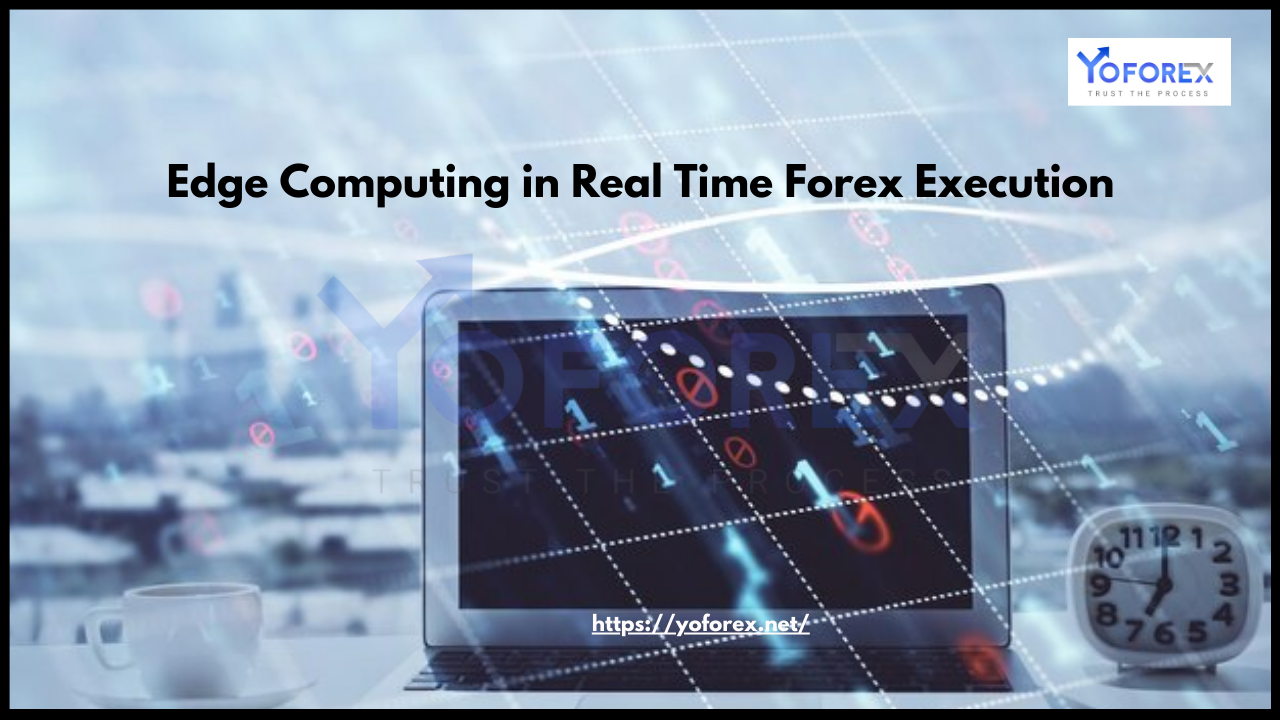In the fast-paced world of forex trading, where milliseconds can mean the difference between profit and loss, the demand for ultra-low latency and real-time data processing is higher than ever. Traditional cloud computing architectures, while powerful, often introduce latency due to data transmission between remote data centers. This is where edge computing emerges as a game-changer. By bringing computational resources closer to trading environments, edge computing enhances execution speed, reduces latency, and improves overall trading efficiency.
This article explores the role of edge computing in forex trading, its advantages, challenges, and how it is revolutionizing real-time forex execution.
What is Edge Computing?
Edge computing is a distributed IT architecture that processes data at or near the source of data generation rather than relying on a centralized cloud infrastructure. It minimizes the need for long-distance communication between trading servers and cloud data centers, thereby reducing latency and enhancing real-time decision-making capabilities.
In forex trading, where market fluctuations occur in microseconds, leveraging edge computing can significantly improve trade execution speeds, giving traders a competitive edge.
Why Speed Matters in Forex Trading
Forex trading is one of the most volatile and high-frequency trading markets, where even a fraction of a second can impact trade outcomes. Traders and institutions rely on automated trading algorithms and high-frequency trading (HFT) systems that require ultra-fast data processing and execution speeds. Delays in trade execution can lead to price slippage, increased risk exposure, and lower profitability.
Key latency factors affecting forex trading:
- Network Latency – Time taken for data to travel between servers and trading terminals.
- Processing Latency – Time taken to process data and execute orders.
- Market Latency – Delays in receiving price feeds from liquidity providers.
By deploying edge computing, traders can reduce these latency factors and execute trades with near-instant precision.

How Edge Computing Enhances Real-Time Forex Execution
1. Ultra-Low Latency Trading
Edge computing processes trade data closer to liquidity providers and brokers, eliminating the delays caused by centralized cloud systems. Forex brokers using edge computing can offer traders ultra-low latency trading environments, allowing them to execute trades at the best possible prices.
2. Improved Market Data Processing
Edge computing enables real-time data analysis by processing forex market feeds directly at trading hubs or exchange locations. This ensures traders receive accurate and up-to-date price quotes without delays caused by data transmission.
3. Enhanced Algorithmic Trading Performance
Many forex traders use algorithmic and HFT strategies that require split-second decision-making. Edge computing reduces the time taken for trade order validation, risk assessment, and execution, allowing trading bots to operate at peak performance levels.
4. Better Connectivity & Redundancy
By placing edge nodes at strategic locations, forex brokers can enhance network reliability and reduce the risk of service interruptions. Edge computing ensures that even in case of internet disruptions or high server loads, trading operations continue smoothly.
5. Reduction in Slippage & Requotes
Slippage occurs when trade orders are executed at a different price than expected due to market fluctuations and execution delays. With edge computing, forex brokers and traders can significantly minimize slippage and requotes, leading to better trading outcomes.
Edge Computing vs. Cloud Computing in Forex Trading
| Feature | Edge Computing | Cloud Computing |
|---|---|---|
| Latency | Ultra-low latency due to localized processing | Higher latency due to centralized data centers |
| Data Processing | Processes data at the network edge | Processes data in remote cloud servers |
| Scalability | Limited by physical edge locations | Highly scalable with centralized resources |
| Reliability | More resilient to network failures | Dependent on cloud connectivity |
| Security | Localized processing reduces attack vectors | Cloud-based security depends on provider |
While cloud computing provides scalability, edge computing excels in real-time trading scenarios by minimizing delays and enhancing execution speeds.
Challenges of Implementing Edge Computing in Forex Trading
While edge computing offers numerous advantages, it comes with its own set of challenges:
1. Infrastructure Costs
Deploying edge computing requires investment in physical infrastructure, including dedicated servers, data centers, and networking equipment at strategic locations.
2. Complexity in Deployment
Unlike cloud computing, which offers centralized management, edge computing requires distributed deployment and monitoring of multiple edge nodes across different locations.
3. Security Concerns
Although edge computing can enhance security by localizing data processing, it also introduces new risks such as physical tampering of edge devices and potential cyber-attacks.
4. Data Synchronization Challenges
Since edge computing operates in a decentralized manner, ensuring real-time synchronization between different trading nodes and data sources can be challenging.
Future of Edge Computing in Forex Trading
The adoption of edge computing in forex trading is expected to grow significantly as more trading firms, brokers, and financial institutions recognize its benefits. Some emerging trends include:
1. AI-Powered Edge Computing
Integration of artificial intelligence (AI) with edge computing will enable real-time predictive analytics, allowing traders to make more informed decisions instantly.
2. Blockchain and Edge Computing
Blockchain-based decentralized trading platforms can leverage edge computing to provide real-time trade verification and settlement while ensuring security and transparency.
3. 5G and Edge Networks
The rollout of 5G networks will further enhance edge computing capabilities, enabling ultra-fast trade execution and seamless connectivity between trading nodes.
4. Decentralized Finance (DeFi) Integration
Forex trading within DeFi ecosystems can benefit from edge computing by ensuring real-time liquidity pooling and trade execution on decentralized platforms.
Conclusion
Edge computing is revolutionizing real-time forex execution by drastically reducing latency, enhancing trading efficiency, and enabling faster market data processing. As forex markets become increasingly competitive, traders and brokers leveraging edge computing will gain a significant advantage in executing trades with precision and speed.
Stay Updated & Download: https://yoforex.net/edge-computing-in-real-time-forex-execution/
😎 Happy Trading 😎

